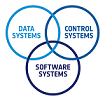Speaker
Description
This presentation will discuss the main challenges related to Autonomy and FDIR for Space Missions in a changing environment: constellations, debris management, complex integrated equipment, off-the-shelf equipment, increased availability requirements, human safety. AOCS/GNC functions are required to answer at the same time very high performance requirements and high resilience to ensure Spacecraft and Mission safety: robustness to radiation-induced effects (e.g. SEU), robustness to uncertain environment in critical phases (e.g. EDL, RDV), and robustness to degraded configurations (e.g. after multiple failures). Trade-offs and potential solutions currently developed by Airbus Defence and Space will then be presented:
- AOCS/FDIR Strategies: the different ways to implement Fail-Operational concept after critical failure (e.g. hot redundancy, warm restart, autonomous mission resume after restart, …), the different Safe Mode Strategies to improve Mission recovery (e.g. alternatives to Sun pointed attitude in Safe Mode, Star-Tracker based Safe Mode, autonomous Normal Mode entry and mission continuation, …)
- AOCS/FDIR Failure Detection improvements: technological vs functional monitoring, use of Artificial Intelligence techniques, independent safety monitoring, …
- AOCS/FDIR Engineering process: Generic AOCS/GNC Techniques & Design Framework for FDIR, Model-Based Engineering, handbooks, key principles and best practices,

